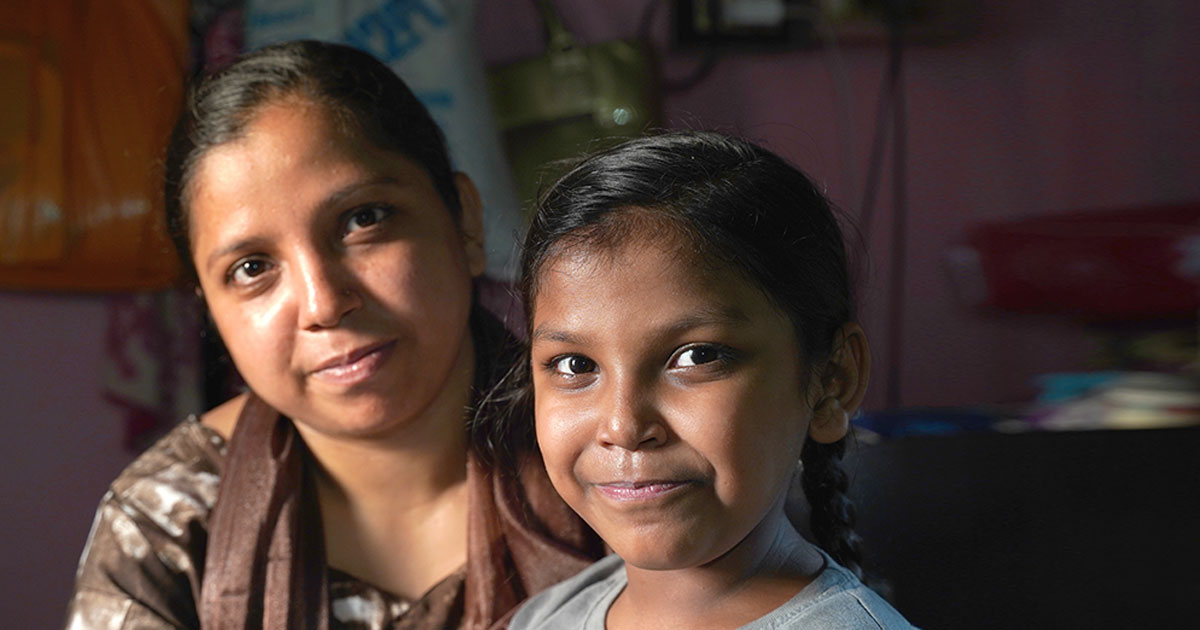At-Risk Youth: Initiatives That Support Underprivileged Kids
Navigating the landscape of initiatives aimed at supporting underprivileged kids and at-risk youth is a journey marked by diverse approaches, challenges, and solutions. In our exploration, we delve into the efficacy of various programs, shedding light on their strengths, drawbacks, and the critical importance of individualized attention. From residential treatment centers providing structured environments for comprehensive therapy to therapeutic boarding schools fostering holistic support, each initiative plays a vital role in shaping the trajectory of vulnerable youth. However, amidst the array of interventions, questions arise concerning the suitability and inclusivity of certain approaches, such as military-based programs and Christian boarding schools. As we examine these facets, we uncover essential qualities that define successful youth at-risk programs, emphasizing the significance of tailored support, diverse activities, safety, and aftercare. At the heart of our discussion lies a fundamental principle: the profound impact of individualized attention in nurturing the potential and well-being of at-risk youth. Join us as we embark on a journey to understand, evaluate, and advocate for initiatives that uplift and empower those most in need of support.

Residential Treatment Centers for At-Risk Youth
Residential treatment centers are effective for at-risk youth due to their structured and clinically focused environment. These centers offer a safe space where young individuals can receive behavior therapy and treatment for serious mental, emotional, and behavioral issues. What sets successful residential treatment centers apart is their integrated approach, which includes various therapeutic activities such as academics, sports, outdoor pursuits, and practical life skills training. These diverse activities not only address the immediate challenges but also foster holistic development and rehabilitation. Moreover, residential treatment centers provide a supportive atmosphere where individuals can receive personalized attention and care, aiding in their journey towards positive change. By offering a comprehensive program that combines therapy, education, and life skills training, residential treatment centers equip at-risk youth with the tools they need to overcome obstacles and lead fulfilling lives. This multifaceted approach addresses the root causes of their struggles while empowering them to build a brighter future.
How do therapeutic boarding schools help troubled teenagers?
Therapeutic boarding schools support At-Risk Youth teenagers by offering a structured and supervised environment that combines education with intensive therapeutic interventions. These schools provide a holistic approach to healing, addressing not only academic needs but also mental, emotional, and behavioral challenges. Through individual and group therapy sessions, as well as experiential activities, students learn coping skills, emotional regulation techniques, and healthy communication strategies. Additionally, the supportive community within therapeutic boarding schools fosters peer connections and positive relationships, offering teenagers a sense of belonging and understanding. By integrating therapy into the educational curriculum, these schools empower troubled youth to develop self-awareness, resilience, and the necessary tools for long-term success.
Furthermore, therapeutic boarding schools often offer specialized support for At-Risk Youth for various issues such as substance abuse, trauma, or learning difficulties. With trained professionals and a dedicated staff, students receive personalized attention and tailored interventions to address their unique needs. Additionally, the structured routine and accountability measures in these schools help teenagers develop discipline, responsibility, and goal-setting skills. Through a combination of therapy, education, and structured living, therapeutic boarding schools provide troubled teenagers with a supportive environment where they can heal, grow, and thrive academically, emotionally, and socially.
Challenges of Military-Based Programs for At-Risk Youth and Better Alternatives
Military-based intervention programs for troubled youth face criticism due to their confrontational approach, which may not be suitable for addressing underlying emotional or mental health issues. Critics argue that the strict discipline and rigid structure of these programs may exacerbate trauma or contribute to feelings of alienation among vulnerable youth. Additionally, research suggests that such programs do not effectively reduce recidivism rates among participants. The emphasis on control and obedience in military-based interventions may overlook the root causes of behavior problems and fail to provide the necessary support for long-term positive change. Moreover, concerns about potential abuse within these programs raise ethical considerations regarding the well-being and safety of participants.
Recommended alternatives to military-based intervention programs for At-Risk Youth include residential treatment centers and therapeutic boarding schools. These alternatives offer a more holistic and therapeutic approach, addressing the underlying emotional, behavioral, and academic needs of youth in a supportive and nurturing environment. Residential treatment centers provide comprehensive therapy and treatment for serious mental health issues, while therapeutic boarding schools combine education with intensive therapeutic interventions. Both options prioritize individualized care, personalized attention, and evidence-based practices to help troubled youth heal and develop essential life skills. By focusing on rehabilitation rather than punishment, these alternatives offer a more effective and sustainable path towards positive outcomes for troubled youth.
Drawbacks of Christian Boarding Schools for at-risk children
Christian boarding schools, while offering a unique approach to education and intervention for troubled youth, do come with certain drawbacks, particularly regarding student admissions and potential bias. One significant drawback lies in their ability to refuse admission based on qualifications such as race or religion. Since these schools often operate under the umbrella of specific denominations, they reserve the right to select students who align with their religious beliefs. This practice can lead to exclusivity and inequality, potentially denying access to education for students who do not meet the religious criteria set forth by the school.
Additionally, there is the risk of institutional or systemic bias within Christian boarding schools, especially concerning religious beliefs and practices. These institutions may prioritize certain religious teachings over others, creating an environment where students from different backgrounds may feel marginalized or pressured to conform. This bias can extend to disciplinary practices, academic curriculum, and social interactions within the school community, potentially hindering the overall development and well-being of students who do not share the dominant religious ideology.
Moreover, the emphasis on religious values and teachings in Christian boarding schools may limit exposure to diverse perspectives and worldviews, further reinforcing bias and narrow-mindedness among students. This insular approach to education may inhibit critical thinking skills and tolerance towards individuals with differing beliefs or backgrounds. Overall, while Christian boarding schools offer a unique educational setting for troubled youth, their adherence to religious principles and potential biases in admissions and practices raise important considerations regarding inclusivity and equal access to education for all students.
what are five important qualities of successful At-Risk Youth programs?
Five important qualities of successful At-Risk Youth programs, as highlighted in the provided text, are:
1. Individualized attention: Successful programs provide personalized support and attention to each participant, recognizing their unique needs, challenges, and strengths. This individualized approach allows for tailored interventions and fosters meaningful connections between mentors and youth.
2. Support for efficacy and improvement: Effective programs conduct comprehensive assessments to understand the needs of participants and continuously monitor their progress. They offer therapeutic interventions, counseling, and skill-building activities based on these assessments, ensuring that interventions are evidence-based and responsive to the evolving needs of youth.
3. Wide variety of activities: Successful programs offer diverse activities that promote personal growth, skill development, and community engagement. These activities may include educational workshops, outdoor adventures, sports, arts and crafts, and community service projects. Such activities provide opportunities for youth to explore their interests, build confidence, and develop social and emotional skills in a supportive environment.
4. Safe environment: Quality programs prioritize the safety and well-being of participants by implementing strict safety protocols, supervision measures, and crisis management plans. They create a supportive and nurturing environment where youth feel physically and emotionally secure, allowing them to focus on their personal growth and recovery journey.
5. Aftercare support: Effective programs recognize that the journey to recovery and positive change extends beyond program completion. They offer ongoing support, resources, and follow-up services to help youth transition back into their communities and navigate life after the program. This may include access to counseling, mentoring, educational assistance, vocational training, and community-based support networks, ensuring that youth have the necessary tools and support systems to maintain their progress and thrive in the long term.
Importance of Individualized Attention in At-Risk Youth Programs
Individualized attention is crucial in youth at-risk programs because it recognizes that each participant has unique needs, challenges, and strengths that require personalized support and intervention. In regular classrooms, where student-to-teacher ratios can be high, it’s often challenging for educators to provide individualized attention to every student. However, for at-risk youth who may be struggling academically, emotionally, or behaviorally, personalized support is essential for their success and well-being.
In youth at-risk programs, individualized attention allows mentors and counselors to develop a deep understanding of each participant’s background, experiences, and specific needs. This personalized approach enables them to tailor interventions, strategies, and support services to address the individual challenges and strengths of each youth. By providing individualized attention, these programs can effectively address underlying issues, build trust and rapport with participants, and support their holistic development and recovery journey.
In contrast, regular classrooms often prioritize group instruction and standardized curriculum delivery, which may not adequately meet the diverse needs of at-risk youth. In such settings, students may struggle to receive the targeted support and attention they require to overcome academic, emotional, or behavioral challenges. Additionally, in overcrowded classrooms, at-risk youth may feel overlooked or marginalized, further exacerbating their sense of isolation and disengagement from learning.
Overall, individualized attention in youth at-risk programs allows for a more holistic and responsive approach to supporting the unique needs of each participant, fostering a supportive and nurturing environment where youth can thrive academically, emotionally, and socially.
Final thought
In conclusion, the journey of supporting underprivileged kids and at-risk youth involves navigating through various intervention programs tailored to their specific needs and challenges. Residential treatment centers stand out for their structured and clinically focused environment, providing a safe space for comprehensive therapy and life skills training. Therapeutic boarding schools offer a nurturing environment where troubled teenagers receive personalized attention and holistic support, addressing their emotional, behavioral, and academic needs. However, military-based intervention programs face criticism due to their confrontational approach, prompting the consideration of alternatives like residential treatment centers and therapeutic boarding schools. Meanwhile, Christian boarding schools, while unique in their approach, present drawbacks concerning admissions bias and potential institutional bias, emphasizing the need for inclusivity and equal access to education. Essential qualities of successful youth at-risk programs include individualized attention, support for efficacy and improvement, a wide variety of activities, a safe environment, and aftercare support. Ultimately, recognizing the importance of individualized attention in at-risk youth programs underscores the significance of personalized support and intervention in fostering their holistic development and well-being.




